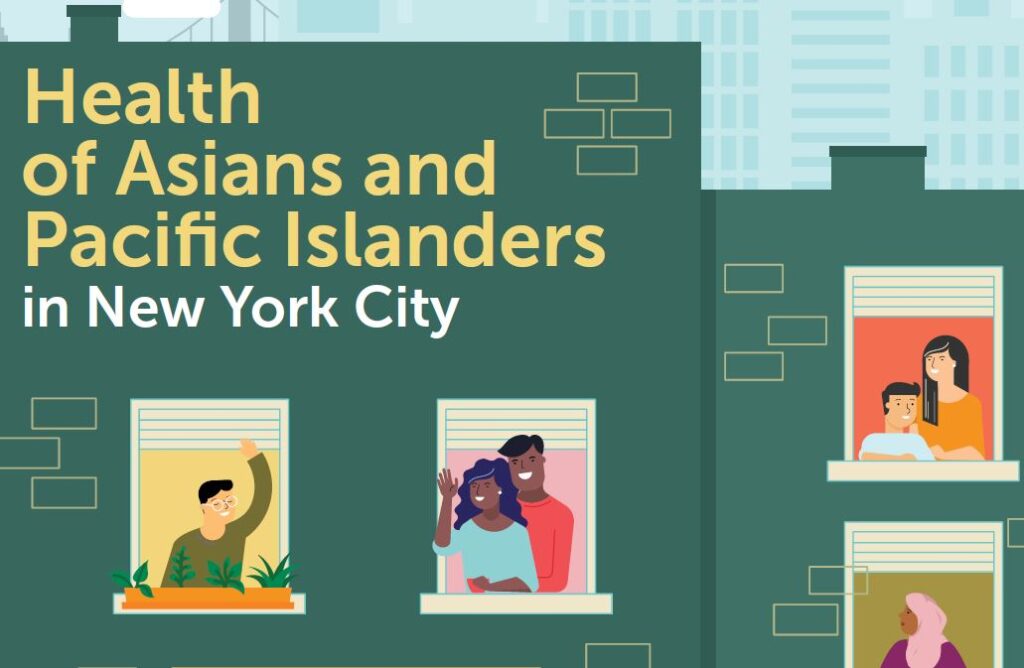Government, Health, Resources
Unlike other racial groups, cancer is the leading cause of death in Asian American men and women
Cancer is the leading cause of death among Asian American men and women, while heart disease is the leading cause of death for all other racial/ethnic groups in the United States. Cancer burden varies among different Asian American and Native Hawaiian Pacific Islander (NHPI) subgroups and by gender. It is the leading cause of death in Chinese, Filipino, Korean, and Vietnamese Americans, and it ranks second for Asian Indian, Japanese, Native Hawaiian, and Guamanian Americans. Yet, Asian Americans and NHPIs are screened for cancer at lower rates than the majority of Americans. Asian Americans and NHPIs receive less than 1% of health funding from the U.S. National Institutes of Health (NIH), though we make up 6-7% of the total U.S. population.
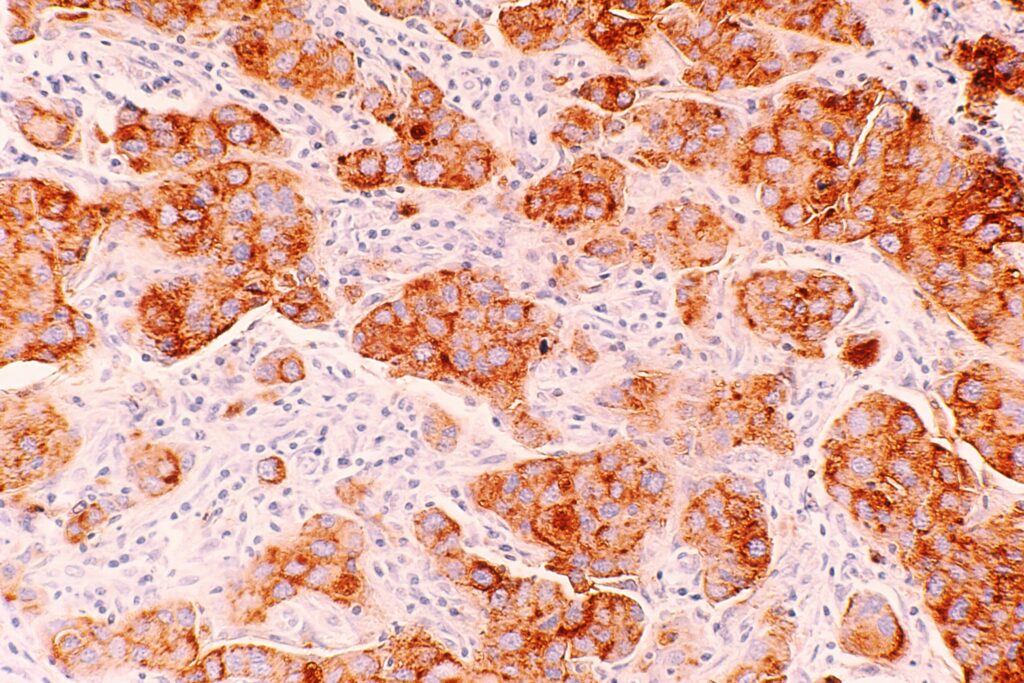
According to the American Cancer Society (ACS), cancer as the leading cause of death in Chinese, Filipino, Korean, and Vietnamese Americans. For Asian Indian, Japanese, Native Hawaiian, and Guamanian Americans, cancer ranks as the second leading cause of death. The ACS projects in 2024 that there will be more than 2 million new cancer cases and over 611,000 cancer deaths in the United States for all races/ethnic groups. Specifically for Asian Americans and Native Hawaiian Pacific Islanders (NHPIs), the Centers for Disease Control and Prevention (CDC) estimates over 68,000 Asian Americans and NHPIs were diagnosed with cancer and over 20,000 died from cancer in 2021, the latest year available.
Leading Causes of Death by Ethnic Group, U.S. 2020-2021
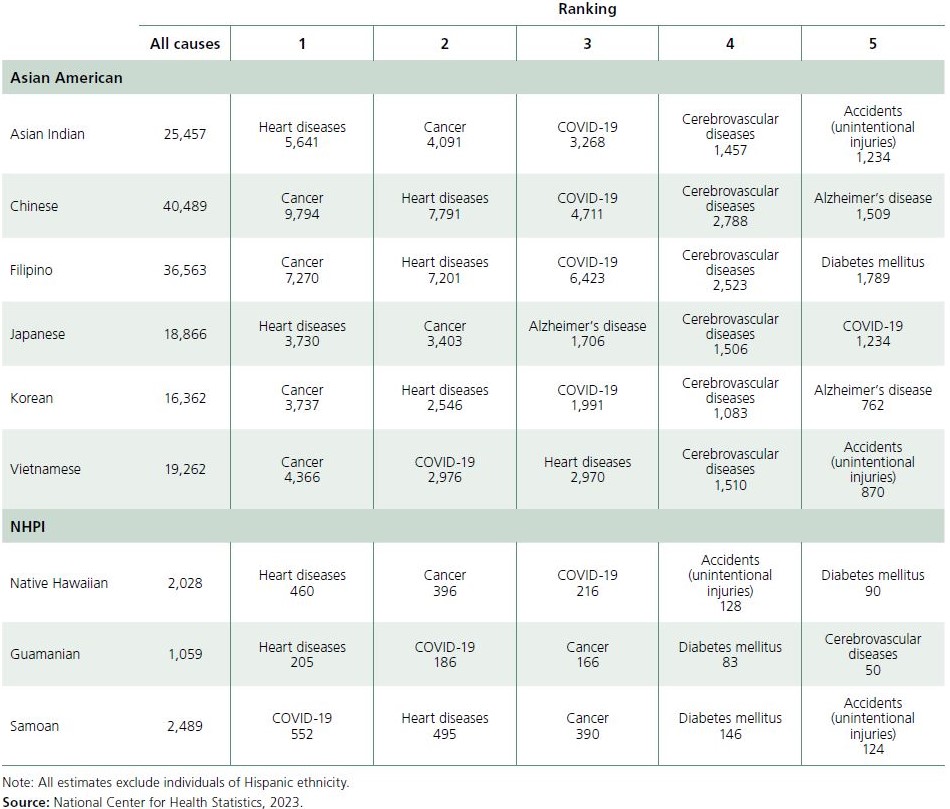
Cancer incidence and death rates
The Surveillance, Epidemiology, and End Results (SEER) Program, a national program that provides cancer statistics on the U.S. population, shows a cancer incidence rate of 440.5 per 100,000 people and death rate of 146.0 per 100,000 for all races/ethnic groups. While Asian Americans and NHPIs as a group shows lower cancer incidence (304.1 per 100,000) and death (93.0 per 100,000) rates than other racial/ethnic groups, there are variations within Asian American and NHPI subgroups that are not captured in the aggregate statistics.
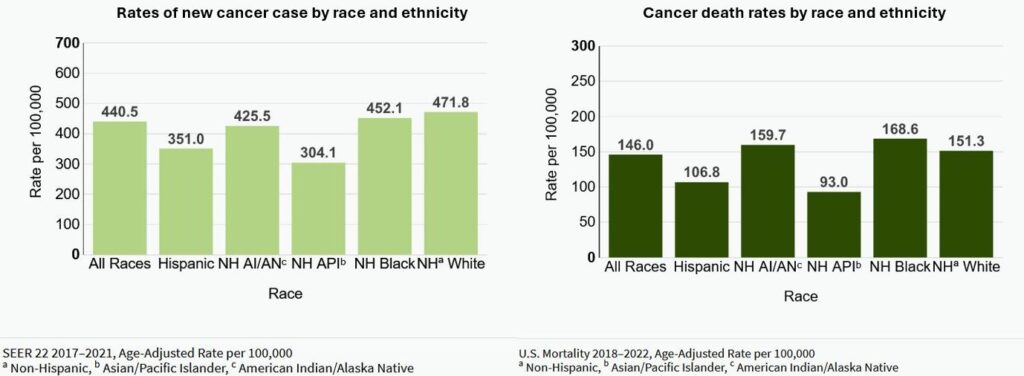
By gender, Asian American and NHPI women have a higher cancer incidence rate (313 per 100,000) and a lower cancer death rate (83 per 100,000) than Asian American and NHPI men. Though the cancer incidence rate tends to be higher for men than for women, the opposite is true for Asian Americans and NHPIs.
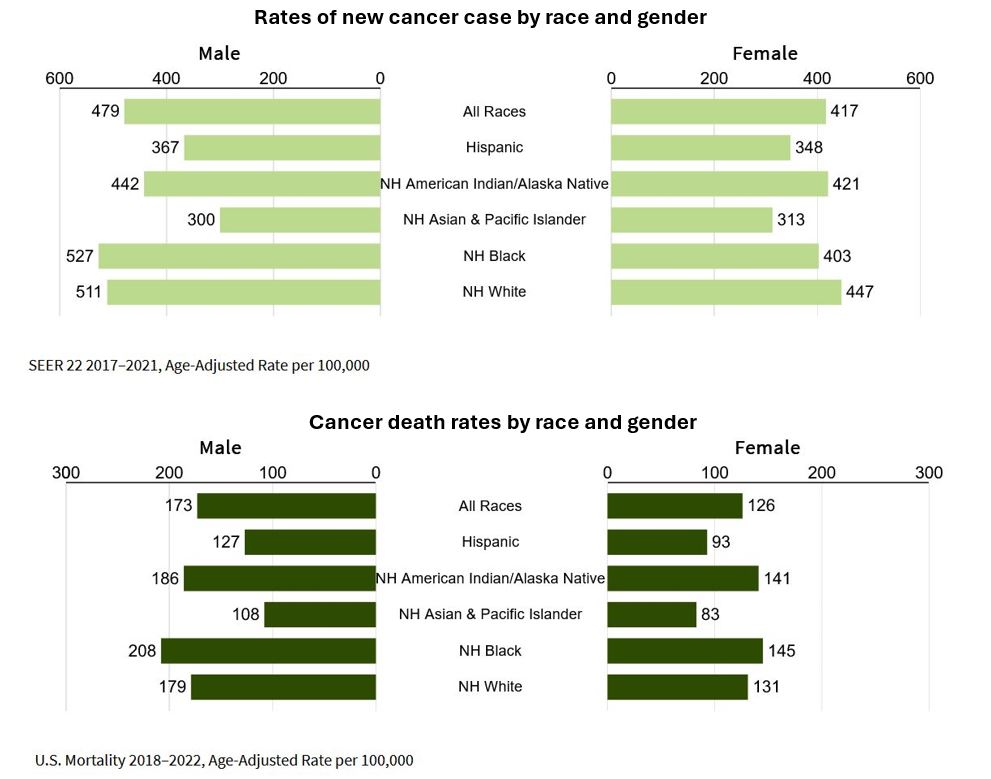
Breast cancer and Asian women
Breast cancer is the most commonly diagnosed cancer for Asian American and NHPI women. Breast cancer represents 30% or more of all diagnosed cancer cases among Chinese, Japanese, Filipino, Korean, Thai, Asian Indian, Pakistani, Native Hawaiian, Chamorro/Guamanian, Tongan, and Fijian women. South Asian women, specifically those of Indian and Pakistani ancestry, were also found to be diagnosed with more aggressive breast cancer at a younger age per a 2020 Rutgers study.
Most common cancer types – Asian American & NHPI Women, 2016-2020
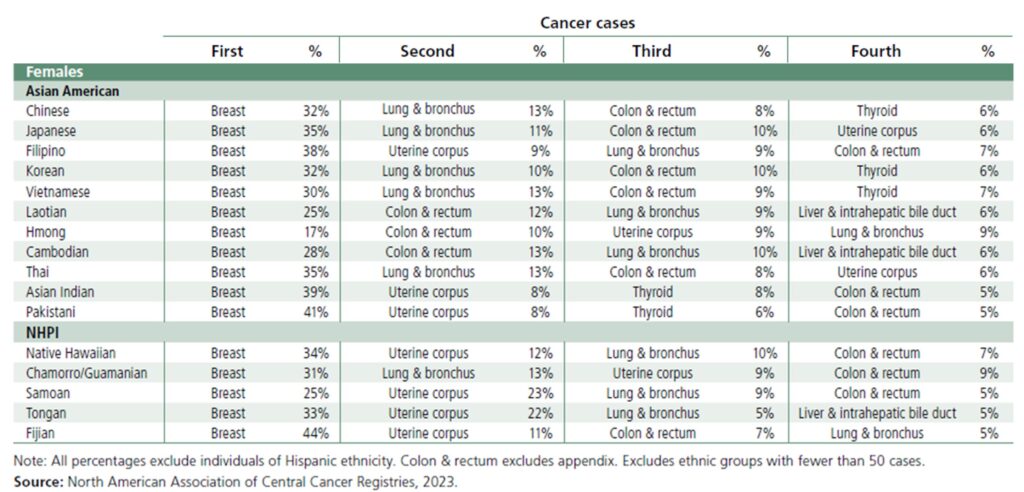
Common cancers among Asian men
Prostate cancer is the most commonly diagnosed cancer in Asian American and NHPI men, as with the overall U.S. male population, but it varies by subgroup. It is the most commonly diagnosed cancer for Japanese, Filipino, Thai, Asian Indian, Pakistani, Native Hawaiian, Samoan, Tongan, and Fijian men. For Chinese, Vietnamese, Laotian, and Chamorro/Guamanian men, lung cancer is the most common, and for Korean, Hmong, and Cambodian men, colorectal cancer is the most common.
Most common cancer types – Asian American & NHPI Men, 2016-2020
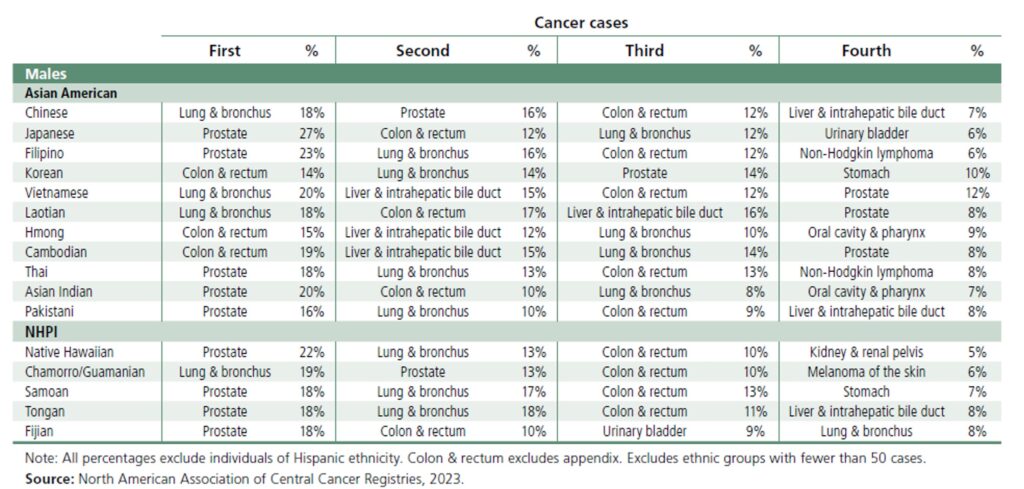
Low cancer screening rates
Asian Americans and NHPIs face a complex set of cancer risks and disparities, yet we are screened for cancer at lower rates than the majority of Americans. A 2023 published study shows a general low screening rate of cancers among Asian Americans that ranged from 40.5% to 67.5%. For example, compared with Americans overall, Asian American screening rates are lower for cervical cancer (75.4% vs. 83.0%), breast cancer (64.1% vs. 72.4%), and colorectal cancer (46.9% vs. 58.6%).
Dissaggregated research and funding
As the Asian American and NHPI population continues to grow and diversify, aggregating data for Asian Americans and NHPIs masks important differences. Examples of these differences include:
- cervical cancer rates are much higher in Vietnamese and Cambodian women, but lower in Chinese and Asian Indian women,
- roughly 57% of Asian American women diagnosed with lung cancer have never smoked, compared to about 15% of all other women, and
- Korean Americans are at an unusually high risk for gastric cancer, while it is less common among White Americans.
More research would help to reduce cancer disparities and improve the health outcomes for Asian American and NHPI populations. However, Asian Americans and NHPIs are underrepresented or overlooked in research and clinical studies, partly due to data aggregation and the “Model Minority Myth.” Despite comprising 6-7% of the U.S. population, Asian Americans and NHPIs receive less than 1% of health funding from the National Institutes of Health (NIH).
Helpful Resources
Cancer Facts & Figures for Asian American, Native Hawaiian, & Other Pacific Islander People (2024, American Cancer Society)
Disparities in Cancer Care and the Asian American Population (2021, The Oncologist)
Cancer Statistics At a Glance (Centers for Disease Control and Prevention)
Get a monthly dose of our latest insights!


About
myasianvoice
At MyAsianVoice, we connect Asian Americans to surveys and research to bridge the Asian data gap.
Join our growing respondent list >>
